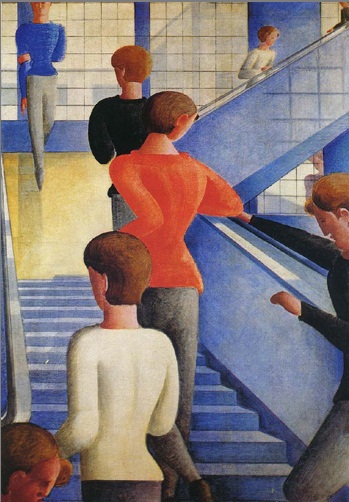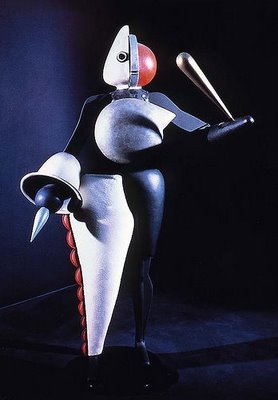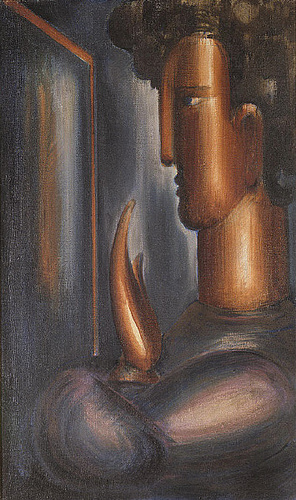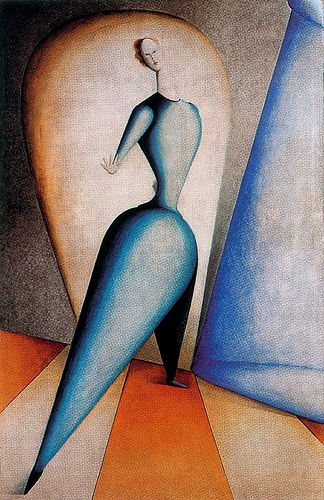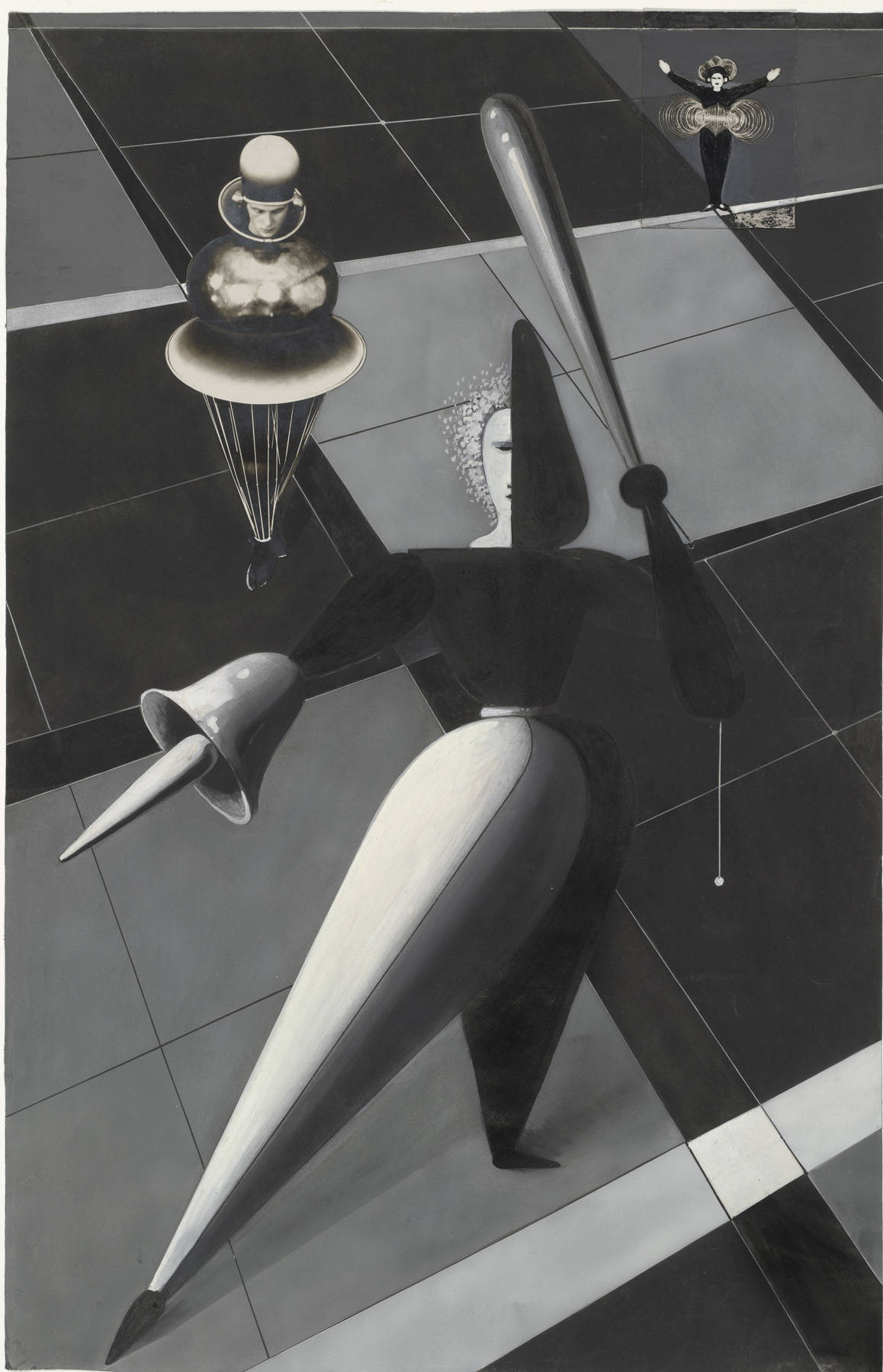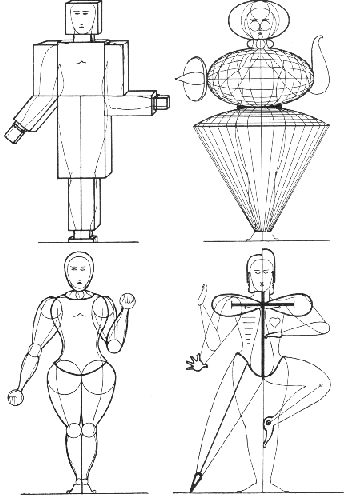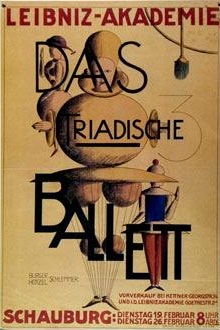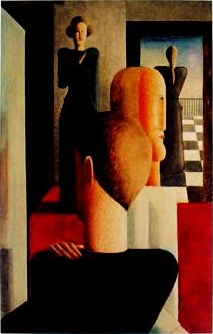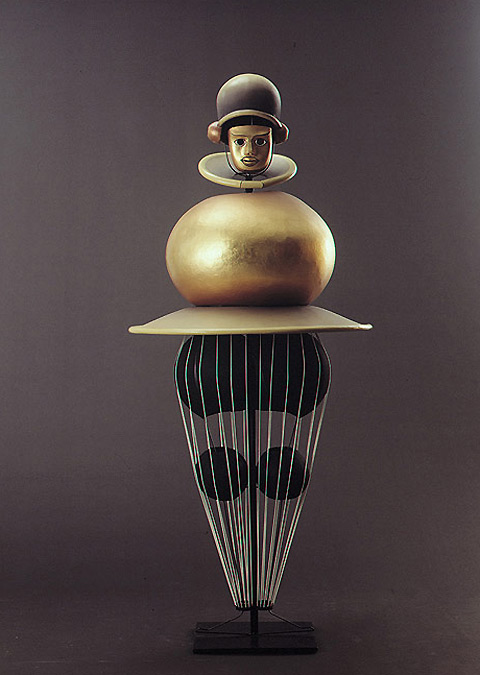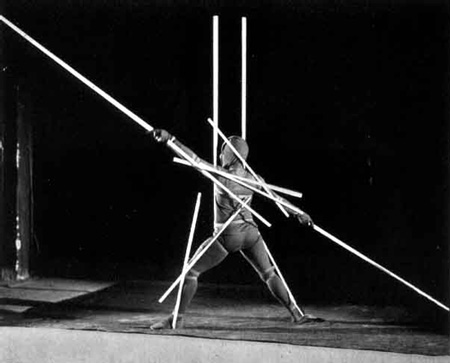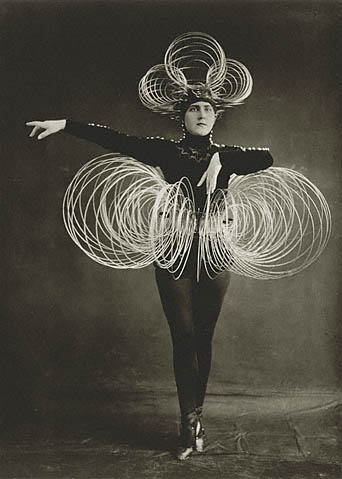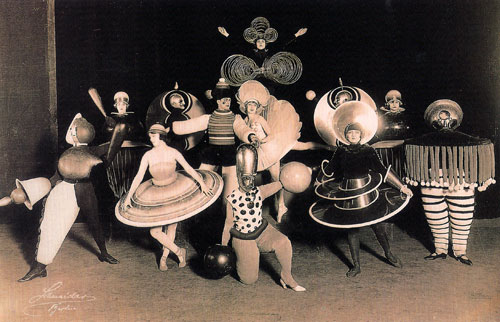<Back to Index>
- Painter, Sculptor and Designer Oskar Schlemmer, 1888
PAGE SPONSOR
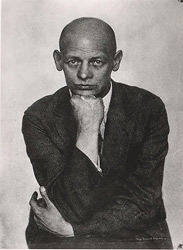
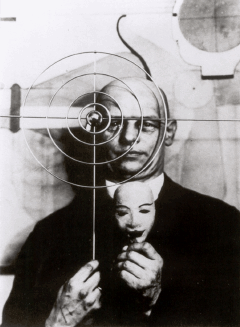
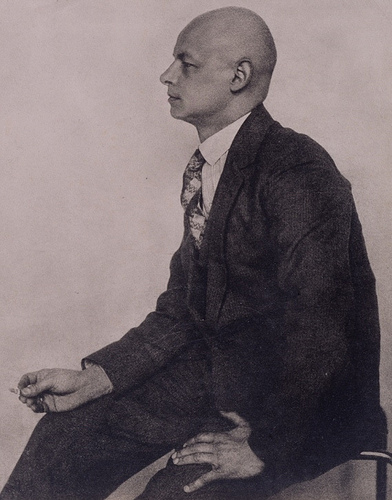
Oskar Schlemmer (September 4, 1888 – April 13, 1943) was a German painter, sculptor, designer and choreographer associated with the Bauhaus school. In 1923 he was hired as Master of Form at the Bauhaus theatre workshop, after working some time at the workshop of sculpture. His most famous work is "Triadisches Ballett," in which the actors are transfigured from the normal to geometrical shapes. Also in Slat Dance and Treppenwitz, the performers' costumes make them into living sculpture, as if part of the scenery.
Born in September 1888 in Stuttgart, Oskar Schlemmer was the youngest of six children. His parents, Carl Leonhard Schlemmer and Mina Neuhaus, both died around 1900 and the young Oskar learned at an early age to provide for himself. By 1903 he was completely independent and supporting himself as an apprentice in an inlay workshop, moving on to another apprenticeship in marquetry from 1905 to 1909.
Oskar Schlemmer studied at the Kunstgewerbeschule as well as the Akademie der Bildenden Künste in Stuttgart under the tutelage of landscape painters Christian Landenberger and Friedrich von Keller. In 1910 Schlemmer moved to Berlin where he painted some of his first important works before returning to Stuttgart in 1912 as Adolf Hölzel's master pupil. In 1914 Schlemmer was enlisted to fight on the Western Front in World War I until he was wounded and moved to a position with the military cartography unit in Colmar, where he resided until returning to work under Hölzel in 1918.
In 1919 Schlemmer turned to sculpture and had an exhibition of his work at the Gallery Der Sturm in Berlin. After his marriage to Helena Tutein in 1920, Schlemmer was invited to Weimar by Walter Gropius to run the mural painting and sculpture departments at the Bauhaus School before heading up the theater workshop in 1923. His complex ideas were influential, making him one of the most important teachers working at the school at that time. However, due to the heightened political atmosphere in Germany at the end of the 1920s, and in particular with the appointment of the radical communist architect Hannes Meyer as Gropius's successor, in 1929 Schlemmer resigned his position and moved to take up a job at the Art Academy in Breslau.
Schlemmer
became known internationally with the première of his
'Triadisches Ballett' in Stuttgart in 1922. His work for the Bauhaus and
his preoccupation with the theatre are an important factor in his work,
which deals mainly with the problematic of the figure in space. People,
typically stylised female figures, continued to be the predominant
subject in his painting. After using Cubism as
a springboard for his structural studies, Schlemmer's work became
intrigued with the possibilities of figures and their relationship to
the space around them, for example 'Egocentric Space Lines' (1924).
Schlemmer's characteristic forms can be seen in his sculptures as well
as his paintings. Yet he also turned his attention to stage design,
first getting involved with this in 1929, executing settings for the
opera 'Nightingale' and the ballet 'Renard' by Igor Stravinsky.
From 1928 to 1930, Schlemmer worked on nine murals for a room in the Folkwang Museum in Essen. After leaving the Bauhaus in 1929, Schlemmer took a post at the Akademie in Breslau, where he painted his most celebrated work, the 'Bauhaustreppe', ('Bauhaus Stairway') (1932; Museum of Modern Art, New York). He was obliged to leave the Breslau Academy when it was closed down in the wake of the financial crisis following the Wall Street Crash, and took up a professorship at Berlin's Vereinigte Staatsschulen in 1932, which he held until 1933 when he was forced to resign due to pressure from the Nazis. The Schlemmers then moved to Eichberg near the Swiss border, and then to Sehringen before his pictures were displayed at the National Socialist exhibition of "Degenerate Art." The last ten years of his life were spent in a state of 'inner emigration'. Max Bill, in his obituary of Schlemmer, wrote that it was 'as if a curtain of silence' had descended over him during this time.
During World War II Schlemmer worked at the Institut für Malstoffe in Wuppertal along with Willi Baumeister and Georg Muche,
run by the philanthropist Kurt Herbert. The factory offered Schlemmer
the opportunity to paint without the fear of persecution. His series of
eighteen small, mystical paintings entitled "Fensterbilder" ("Window
Pictures," 1942) were painted while looking out the window of his house
and observing neighbors engaged in their domestic tasks. These were
Schlemmer's final works before his death in the hospital at Baden - Baden in 1943.
Schlemmer's ideas on art were complex and challenging even for the progressive Bauhaus movement. His work, nevertheless, was widely exhibited in both Germany and outside the country. His work was a rejection of pure abstraction, instead retaining a sense of the human, though not in the emotional sense but in view of the physical structure of the human. He represented bodies as architectural forms, reducing the figure to a rhythmic play between convex, concave and flat surfaces. And not just of its form, he was fascinated by every movement the body could make; trying to capture it in his work. As well as leaving a large body of work behind, Schlemmer art theories have also been published. A comprehensive book of his letters and diary entries from 1910 to 1943 is also available
Along with Schlemmer's diary, his private letters to Otto Meyer and Willi Baumeister have given valuable insight on what happened at the Bauhaus; especially his writings of how the staff and students responded to the many changes and developments at the school.
